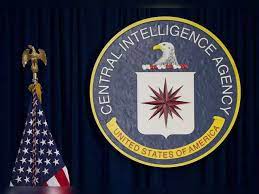
Operation Cyclone was the codename for a covert operation run by the Central Intelligence Agency (CIA) to support the mujahideen, insurgent groups fighting the Soviet-backed government of Afghanistan during the Soviet–Afghan War (1979–1989). It was one of the longest and most expensive covert operations in CIA history, spanning from 1979 to 1989.
The Soviet invasion of Afghanistan in December 1979 was seen as a major threat to U.S. interests in the region. The Carter administration initially authorized limited covert aid to the mujahideen, but this was significantly increased under the Reagan administration in 1981. The CIA began providing the mujahideen with weapons, ammunition, and training, with funding primarily channeled through Pakistan's Inter-Services Intelligence (ISI).
Escalation and the Stinger Missiles (1983-1988) The Reagan administration significantly escalated U.S. involvement in Operation Cyclone in 1983, authorizing the provision of more sophisticated weaponry, including the FIM-92 Stinger surface-to-air missile. The Stinger proved to be a game-changer in the conflict, as it allowed the mujahideen to effectively target Soviet helicopter gunships and inflict heavy losses on the Soviet forces.
Soviet Withdrawal and Aftermath (1988-1992)
he Soviet Union began withdrawing its troops from Afghanistan in 1988, and the mujahideen eventually prevailed in 1989. However, the power vacuum left by the Soviets led to a civil war among the various mujahideen factions, which ultimately paved the way for the rise of the Taliban in the mid-1990s.
Legacy and Consequences
Operation Cyclone remains a controversial chapter in U.S. foreign policy. While it is credited with contributing to the Soviet withdrawal from Afghanistan, it also had unintended consequences. The proliferation of weapons during the conflict fueled instability in the region, and the U.S. support for certain mujahideen groups, such as the one led by Gulbuddin Hekmatyar, is seen by some as having laid the groundwork for the rise of extremism
Operation Easy Chair was a joint covert operation conducted by the US Central Intelligence Agency (CIA), the Dutch Internal Security Service (BVD), and the Dutch Radar Laboratory (NRP) from 1958 to 1962. Its objective:plant a covert listening device in the office of the Russian Ambassador in The Hague, Netherlands.
Origins and Inspiration:
The operation derived its name from a rumored bug allegedly found in an armchair gifted to the American embassy in Moscow. This discovery, nicknamed "The Thing," triggered the CIA's desire to develop a countermeasure, hence the birth of Easy Chair.
Development and Devices:
The core focus of Easy Chair was the creation of a passive covert listening device, meaning it wouldn't require batteries and rely instead on remotely transmitted radio frequency (RF) energy for power. This led to a series of progressively advanced devices:
-
- Easy Chair Mark I (1955): Initial prototype with limited success.
-
- Mark II (1956): Improved functionality but still faced technical challenges.
-
- Mark III (1958): Successfully deployed in the Russian embassy, hidden within a desk leg.
-
- Mark IV (1961): Further refinements but not actively used.
-
- Mark V (1962): Achieved reliable operation but by then CIA interest had shifted.
Deployment and Outcome:
In 1958, after several iterations, Mark III was successfully installed in the Russian embassy desk, powered by a transmitter stationed over 100 meters away. This allowed the CIA to eavesdrop on ambassadorial conversations for over six months.
End and Legacy:
The operation ultimately concluded in 1962, partly due to technical limitations of the passive devices and the CIA's growing preference for active, battery-powered bugs. Additionally, the high RF levels required raised concerns about potential detection.
While not fully achieving its long-term goals, Operation Easy Chair represented a significant effort in Cold War espionage and technological innovation. It highlighted the race for intelligence-gathering advancements and the complexities involved in covert operations.
Additional Points to Consider:
-
- The full details of the operation and its effectiveness remain classified.
-
- The ethical implications of covert surveillance raise ongoing debates.
- Operation Easy Chair serves as a historical case study in intelligence gathering methods and their evolution.


You must be logged in to post a comment.